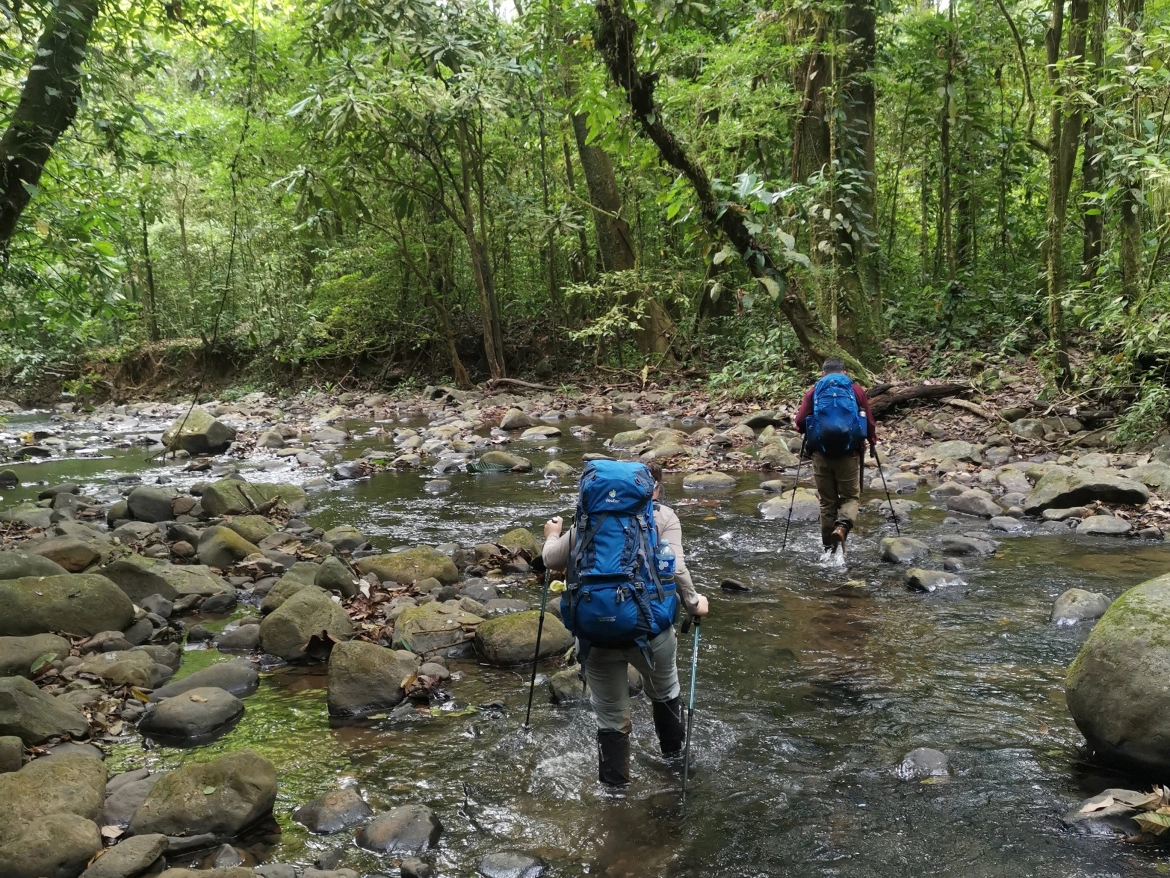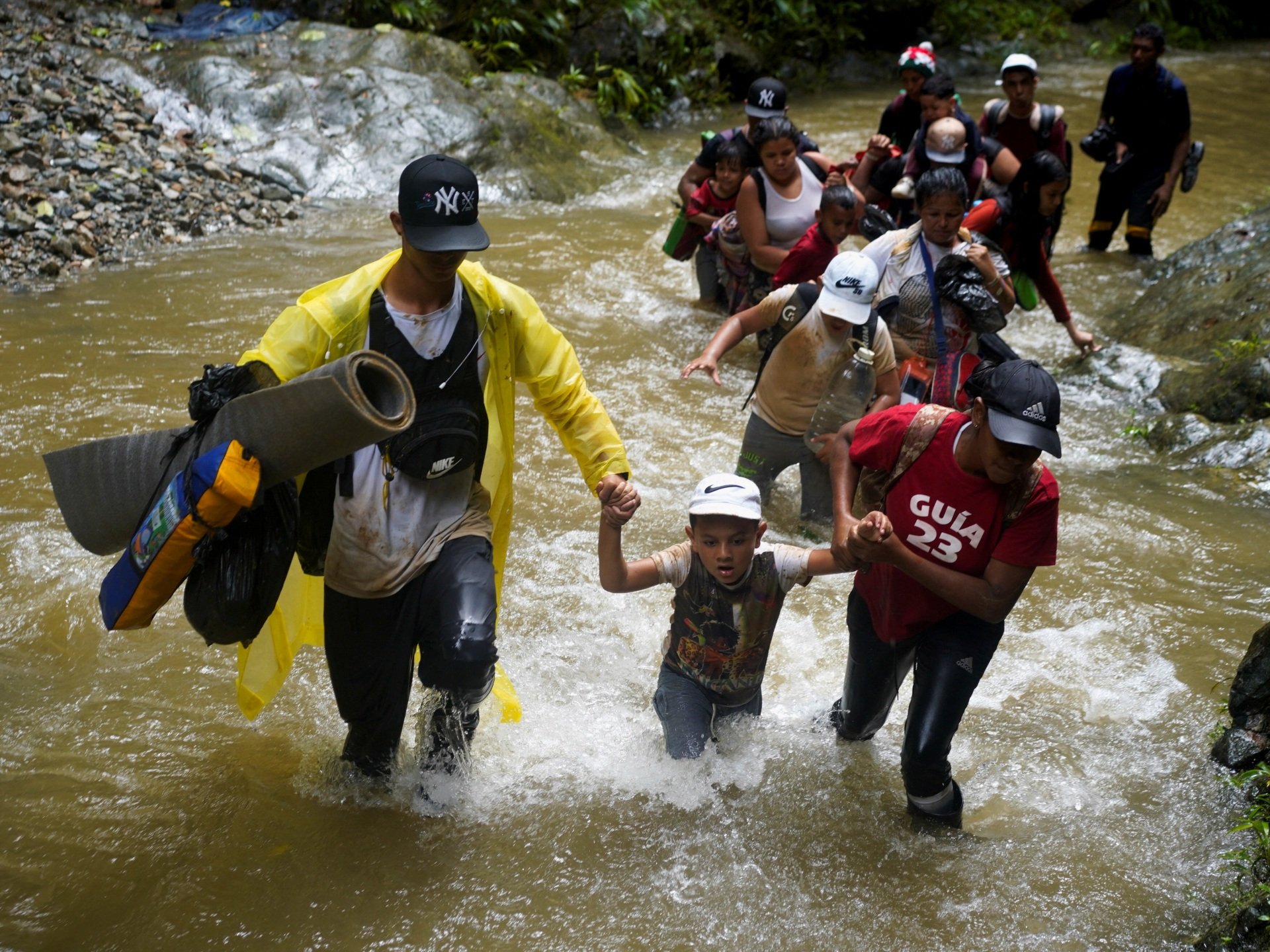Published On 23 Jul 202323 Jul 2023
Deep in the Panamanian jungle, Venezuelan migrant Franca Ramirez was scrambling to reach higher ground as a rushing river broke its banks when something caught his eye: a group of young men snapping photos of the landscape.
They were more than a day’s journey into the Darien Gap. The notorious stretch of jungle in Panama has become a treacherous part of the journey for tens of thousands of people trekking across the Americas, hoping ultimately to reach the United States.
The encounter was a rare moment of two different worlds colliding in one of the planet’s wildest places.
The jungle has long attracted hardcore adventurers. It is known as the “gap” on Panama’s Darien isthmus because it is the only missing section, running about 97km (60 miles), on the Pan-American Highway that stretches from Alaska to Argentina.
For decades, only the most intrepid of travellers ventured into this once-impenetrable forest – dodging guerrillas and bandits, hunting for rare orchids or the great green macaw, and seeking the thrill of being one of the few brave enough to enter the wilderness where the road ends.
In recent years, parts of this jungle have become the site of a humanitarian catastrophe. Blocked by visa restrictions from entering countries closer to the United States, a quarter of a million people crossed the perilous terrain en route to the US border last year.
At least 137 migrants died or went missing, including at least 13 minors, according to the UN’s International Organization for Migration (IOM).
“The real number of migrants who have died and disappeared in the jungle is much, much higher,” the IOM said in a statement to the Reuters news agency.
Marco Wanske, a 31-year-old German who went on a 12-day jungle trek in January, said everyone in his group sustained minor injuries such as “jungle rot”, a fungus that affects the feet, and one person had to be carried out by the group on the last day because she was unable to walk.
Migrants, at the mercy of smuggling gangs, often receive far less for their money.
Kisbel Garcia, a migrant from Venezuela, said she paid over $4,000 to a guide who promised to lead her and her four children and mother-in-law safely through the jungle.
But instead of tourist-style protection, Garcia’s guide abandoned them two days into the trek.
The family wandered six days through the mountains, passing corpses as they ran out of food, she says, and relying on scraps of blue cloth tied to trees by migrants to help mark the path for those who followed.
They survived.
“We migrants have to fight against all the risks without any kind of help,” she said. “The Darien is hell.”
Tourists hike during an excursion through the Darien Gap region of Panama. The global adventure tourism market is booming, experts say, with its expenditures topping $680bn, according to a 2021 report from the Adventure Travel Trade Association. [File: Marco Wanske, Panama-Immigration/Tourism via Reuters]

A group of migrants from different countries walk through the Darien Gap. In recent years, parts of this jungle have become the site of a humanitarian catastrophe. [Adri Salido/Reuters]

Among the wealthy there will always be the search for the rare and exotic. I’m not surprised that this has become some kind of distorted 'destination"
It’s literally the only gap in a thousands of miles long highway. That makes it at least a bit intriguing. Terrible how many people die trying to pass it, but that’s hardly the tourists fault.
The gap between the haves and the have nots. Thanks for posting, this was really sobering.
Ask the venezuelan migrants there thanks to the socialism save the leftist “revolution”.
Thank God the bastard Chavez is dead. And Maduro is the next




